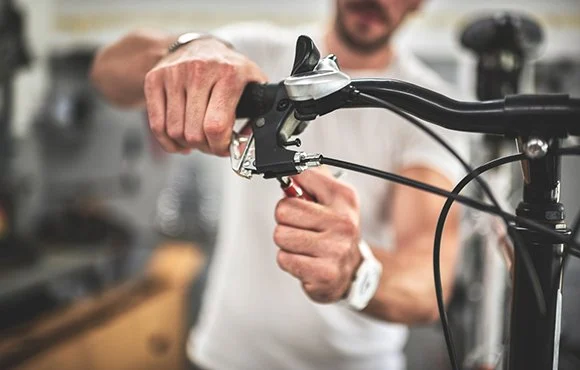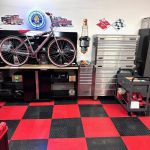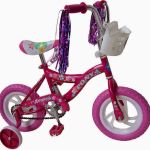
- 1 - Poor Bike Cleaning Habits
- 2 - Incorrect Tire Pressure Maintenance
- 3 - Ignoring Drivetrain Wear
- 4 - Overlooking Brake Systems
- 5 - Improper Chain Lubrication
- 6 - Mismatch Bike Fitting and Neglecting Adjustments
- 7 - Overestimating DIY Skills vs. Professional Maintenance
- 8 - Finding Reliable Products and Maintenance Help
1 - Poor Bike Cleaning Habits
One of the most common bike maintenance mistakes is underestimating the importance of regular cleaning. It’s tempting to skip this step, especially when your bike doesn’t look too dirty on the surface. But underneath, grime, sweat, and dust accumulate quickly, especially in the drivetrain and braking systems. Neglecting cleaning causes corrosion, reduces component lifespan, and directly affects performance.
Take the example of cyclist Andrew L., who rode daily through the city. He never cleaned his drivetrain, thinking city dust was harmless. A year later, his entire cassette was worn, and shifting had become unpredictable. What could have been solved with a monthly 10-minute clean-up turned into a $300 replacement job.
Don’t just hose the bike down—use a soft brush and degreaser for your chain, gears, and derailleurs. Make sure to dry your bike fully to avoid rust. Regular cleaning not only improves performance but also allows you to inspect the frame and components for cracks or early signs of failure.
2 - Incorrect Tire Pressure Maintenance
Riding with the wrong tire pressure is more common than most cyclists realize. Whether you're overinflating or underinflating, both extremes reduce ride comfort, increase the risk of flats, and accelerate tire wear.
For example, many beginners assume higher pressure equals better speed. But in reality, especially for road cyclists using 25-28mm tires, overinflation can reduce traction and create a bouncy, unstable ride. On the flip side, underinflated tires are prone to pinch flats and create excessive rolling resistance.
Always follow manufacturer-recommended PSI ranges, and check your tire pressure weekly. Use a reliable pressure gauge rather than relying on thumb checks. For precise recommendations based on rider weight and terrain, Cycling Guider offers tire pressure calculators and trusted gauges.
3 - Ignoring Drivetrain Wear
Your bike's drivetrain — chain, cassette, chainrings, and derailleurs — is a precision system. Letting a stretched chain go too long without replacement is one of the most expensive mistakes you can make. It causes premature wear on the cassette and chainrings, which are far more costly to replace than the chain itself.
Consider Emily, a gravel rider, who thought her noisy pedaling was due to poor shifting. When she finally took it to a shop, the mechanic found her chain had stretched well beyond spec and had already worn out the cassette teeth. She could’ve avoided a $200 repair with a $25 chain checker and a $40 chain swap done a few months earlier.
Check chain stretch every 500-1000km and replace when it exceeds 0.5% wear (for 11-speed systems) or 0.75% (for 10-speed or less). Cycling Guider offers guides and comparison reviews for budget-friendly, durable chains.
4 - Overlooking Brake Systems
Brake neglect is not only a maintenance issue—it's a safety hazard. Worn pads, contaminated rotors, or misaligned calipers can dramatically reduce your stopping power, especially in wet or hilly conditions.
Disc brake users often forget that rotor contamination from oil or dirt can cause squealing and poor braking performance. Meanwhile, rim brake users should frequently inspect for pad wear and rim surface damage.
A mountain biker named Felix once ignored brake squeal for months until he had to brake hard on a downhill trail and ended up crashing due to brake fade. Don’t wait for disaster—inspect your brakes monthly. Use proper tools for pad alignment, and replace rotors or pads when worn.
5 - Improper Chain Lubrication
Using the wrong lubricant—or worse, over-lubricating—can turn a well-functioning drivetrain into a sticky mess. One of the worst habits is applying more lube without cleaning the chain first, trapping grit that accelerates wear.
Choose the correct lubricant for your riding conditions: wet lube for rainy, muddy environments; dry lube for dust-free roads. Wipe off excess after application to avoid attracting dirt.
A road rider once applied motor oil thinking it would last longer. While it did stick, it also gunked up the cassette and pulley wheels, requiring a full teardown. Use bike-specific lubricants from trusted suppliers recommended by Cycling Guider to ensure compatibility and efficiency.
6 - Mismatch Bike Fitting and Neglecting Adjustments
Maintenance goes beyond mechanical parts. Many riders experience discomfort not because of broken components, but because their bikes aren’t fitted properly. Seat height, handlebar position, and reach all affect efficiency and injury risk.
Jake, an enthusiastic commuter, began experiencing knee pain after upgrading his saddle. The cause? A saddle tilt that shifted his position forward, altering his pedal stroke. A 5-minute adjustment solved months of discomfort.
Adjustments should be reviewed every few months, especially after component upgrades. If unsure, seek a professional fit. Cycling Guider also offers fitting tools and adjustable stems to help optimize your riding posture.
7 - Overestimating DIY Skills vs. Professional Maintenance
While DIY bike care is empowering, not every fix should be done at home. Misadjusting derailleurs, overtightening bolts, or incorrect headset installation can do more harm than good.
One memorable incident involved a rider who watched a derailleur adjustment tutorial but tightened the limit screws too far, locking the chain and damaging the hanger mid-ride.
Basic skills like flat repair, chain replacement, and cable tension are great to learn. But for complex tasks like hydraulic brake bleeding or wheel truing, consult a pro. At Cycling Guider, we help connect riders with vetted service providers in their area.
8 - Finding Reliable Products and Maintenance Help
When it comes to maintaining your bike, having the right tools and resources is essential. Online advice is abundant, but not all of it is accurate or beginner-friendly. That's why having a trustworthy source can make a difference between learning and damaging your equipment.
Cycling Guider provides curated product reviews, maintenance tutorials, and location-specific recommendations for shops and services. Whether you need a torque wrench, degreaser, or want to compare brake pads for your disc setup, we’ve got the insights you can trust.
From casual commuters to endurance racers, avoiding these common bike maintenance mistakes can help you ride longer, safer, and with fewer costly surprises. Let Cycling Guider be your partner on the road to smarter cycling care.







 Billet BMX5.0 (2 reviews)
Billet BMX5.0 (2 reviews) Far East Children Bicycle Factory1.0 (1 reviews)
Far East Children Bicycle Factory1.0 (1 reviews) Archer Motorsports, Inc.4.0 (8 reviews)
Archer Motorsports, Inc.4.0 (8 reviews) YEP Bike Works4.0 (55 reviews)
YEP Bike Works4.0 (55 reviews) Gorham Bike & Ski4.0 (498 reviews)
Gorham Bike & Ski4.0 (498 reviews) Alchemy Bikes4.0 (37 reviews)
Alchemy Bikes4.0 (37 reviews) How to Teach Kids to Ride a Bike: A Step-by-Step Guide for Parents
How to Teach Kids to Ride a Bike: A Step-by-Step Guide for Parents Tips for Riding on Busy City Streets: Smart Strategies for Urban Cyclists
Tips for Riding on Busy City Streets: Smart Strategies for Urban Cyclists Best US National Parks for Mountain Biking: Ride Epic Trails Across America
Best US National Parks for Mountain Biking: Ride Epic Trails Across America Best Aero Helmets for Time Trials and Racing
Best Aero Helmets for Time Trials and Racing How to Clean and Lubricate Your Bike Chain Like a Pro
How to Clean and Lubricate Your Bike Chain Like a Pro 10 Must-Have Items for Long-Distance Cycling Trips
10 Must-Have Items for Long-Distance Cycling Trips